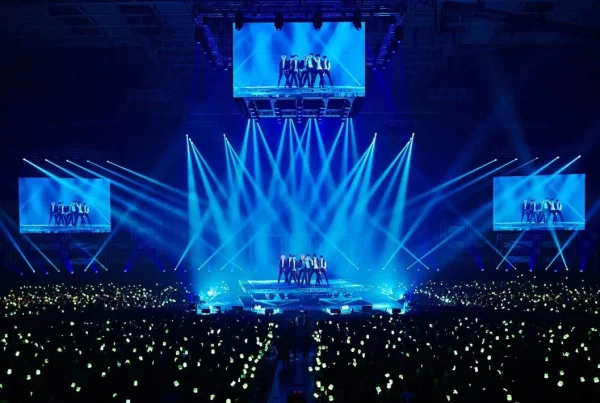When you encounter a black screen on your LED display, it can be a frustrating experience, especially if it happens during a crucial presentation or event. Fortunately, there are steps you can take to diagnose and resolve this issue effectively. Let’s explore these steps in detail:
1. Check the Power Supply:
- The first step is to ensure that your LED display is receiving a stable and proper power supply. Verify that the power cables and connections are securely in place. A lack of power or loose connections can often result in a black screen.
2. Examine the Signal Source:
- Next, inspect the signal source, whether it’s a computer, media player, or controller. Check the cables and connections between the source and the LED display. A malfunctioning source device can be the root cause of the problem.
3. Inspect Signal Cables:
- Take a close look at the signal cables, such as HDMI, VGA, or DVI. Look for any signs of damage, loose connections, or bent pins. Damaged cables can disrupt the signal and lead to a black screen. If you find issues, replace or repair the cables as necessary.
4. Restart the Display:
- Sometimes, a black screen can be the result of a temporary glitch. Try restarting the LED display to see if the problem persists. A simple reboot can often resolve minor issues.
5. Confirm Input Selection:
- Ensure that the LED display is set to the correct input source. It’s not uncommon for the screen to appear black if it’s on the wrong input channel. Check the input source settings to match the connected device.
6. Check for Screen Saver or Sleep Mode:
- LED displays may have built-in screen savers or sleep modes. Check if these features are activated and causing the display to go black after a period of inactivity. Adjust the settings to prevent automatic sleep or screen saver activation.
7. Examine Display Settings:
- Review the display settings on the source device. Confirm that the resolution and refresh rate are compatible with the LED display. A mismatch in settings can lead to a black screen. Adjust the source settings as needed.
8. Test with an Alternative Source:
- To determine if the issue lies with the display or the source device, try connecting the LED display to a different source. If the screen works with the new source, it suggests that the original device may be causing the problem. This helps pinpoint the root cause.
9. Inspect LED Modules and Wiring:
- Physically examine the LED modules on the display for any damaged or malfunctioning components. Additionally, inspect the internal wiring for loose connections or damaged cables. Address any visible issues promptly.
10. Consult Technical Support:
- If, after all these efforts, the black screen issue persists, it may require professional assistance. Contact the manufacturer’s technical support or a qualified technician for in-depth diagnostics and potential repairs.
In conclusion, resolving a black screen issue on your LED display involves a systematic approach, starting with power supply and progressing through signal sources, cables, settings, and hardware inspection. By following these steps, you can often identify and address the problem efficiently. Remember that professional assistance is available if needed to ensure a swift and accurate resolution, keeping your LED display running smoothly.
A black screen on your LED display can be a puzzling and frustrating issue, particularly when you need it to deliver vibrant content or critical information. When you find yourself facing this problem, it’s essential to identify the root cause and take the necessary steps to resolve it. In this article, we’ll delve into the common reasons behind a black screen on your LED display and provide solutions to get it back up and running.
Common Causes of a Black Screen:
1. Power Supply Problems:
- One of the primary reasons for a black screen is a disruption in the power supply. Ensure that your LED display is receiving a stable and uninterrupted power source. Check power cables, connections, and outlets. A loose connection or power outage can result in a black screen.
2. Signal Source Issues:
- Your LED display relies on a signal source, such as a computer, media player, or controller, to deliver content. If the source device is not functioning correctly or is disconnected, it can lead to a black screen. Verify that the signal source is operational and that the cables connecting it to the display are secure.
3. Faulty Signal Cables:
- Signal cables, like HDMI, VGA, or DVI, can be the culprits behind a black screen. Inspect these cables for signs of damage, loose connections, or bent pins. Damaged cables disrupt the signal flow and need to be replaced or repaired.
4. Screen Saver or Sleep Mode:
- LED displays often have built-in screen savers or sleep modes. If these features are activated and set to trigger after a period of inactivity, the screen may go black. Adjust the settings on your LED display to prevent unwanted sleep or screen saver activation.
5. Input Selection Mismatch:
- Confirm that the LED display is set to the correct input source. Select the input channel that matches the connected device. Sometimes, a black screen is the result of mismatched input settings.
6. Display Setting Discrepancies:
- Display settings on the source device, including resolution and refresh rate, should align with the capabilities of your LED display. Incompatible settings can lead to a black screen. Adjust the source device settings to match the display’s specifications.
7. LED Module and Wiring Inspection:
- Physically inspect the LED modules on your display for any damaged or malfunctioning components. Additionally, check the internal wiring for loose connections or damaged cables. Address any visible issues to ensure proper functioning.
8. Test with an Alternative Source:
- To determine whether the issue lies with the display or the source device, connect your LED display to an alternative source. If it works with the new source, the original device may be the problem.
LED display screen wholesaler/manufacturer
Doosign is a LED display screen brand owned by Shenzhen Doosign Technology. We built our reputation based on our high-quality devices including LED Posters, LED digital signage, etc. Ultra lightweight, intelligent control!
Conclusion
In summary, a black screen on your LED display can result from various factors, including power supply issues, signal source problems, cable troubles, and settings mismatches. By systematically addressing these potential causes, you can swiftly diagnose and resolve the issue. In cases where professional assistance is necessary, don’t hesitate to reach out to experts for a timely solution. With these troubleshooting tips in your arsenal, you’ll be better prepared to tackle the dreaded black screen and keep your LED display running smoothly




